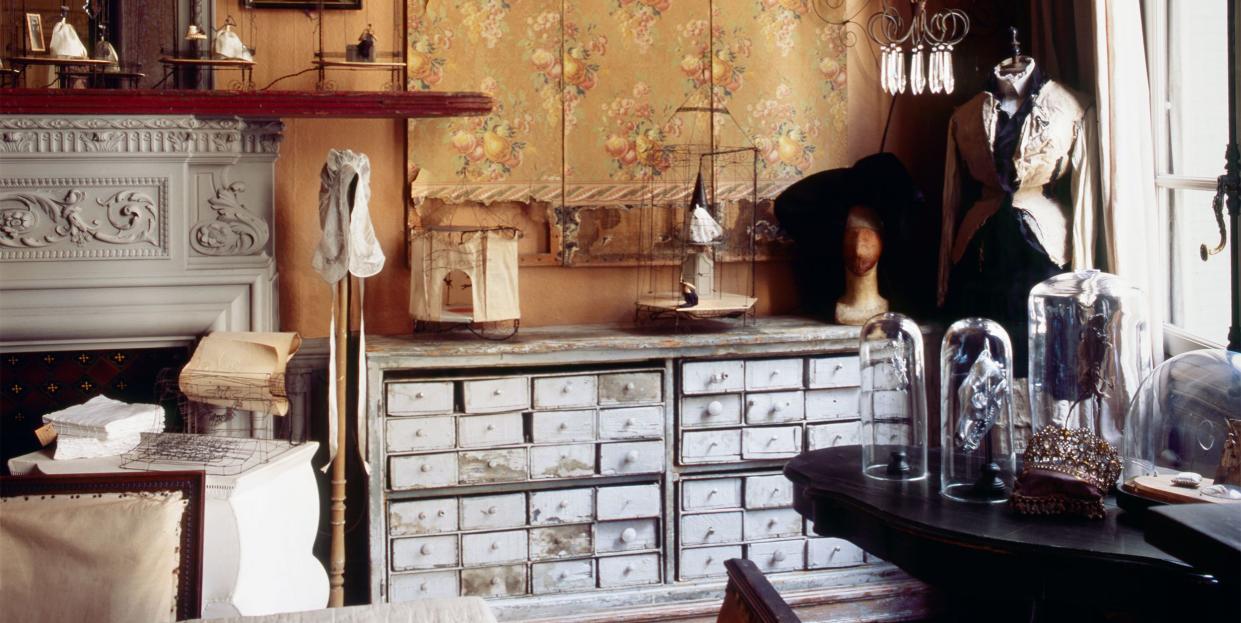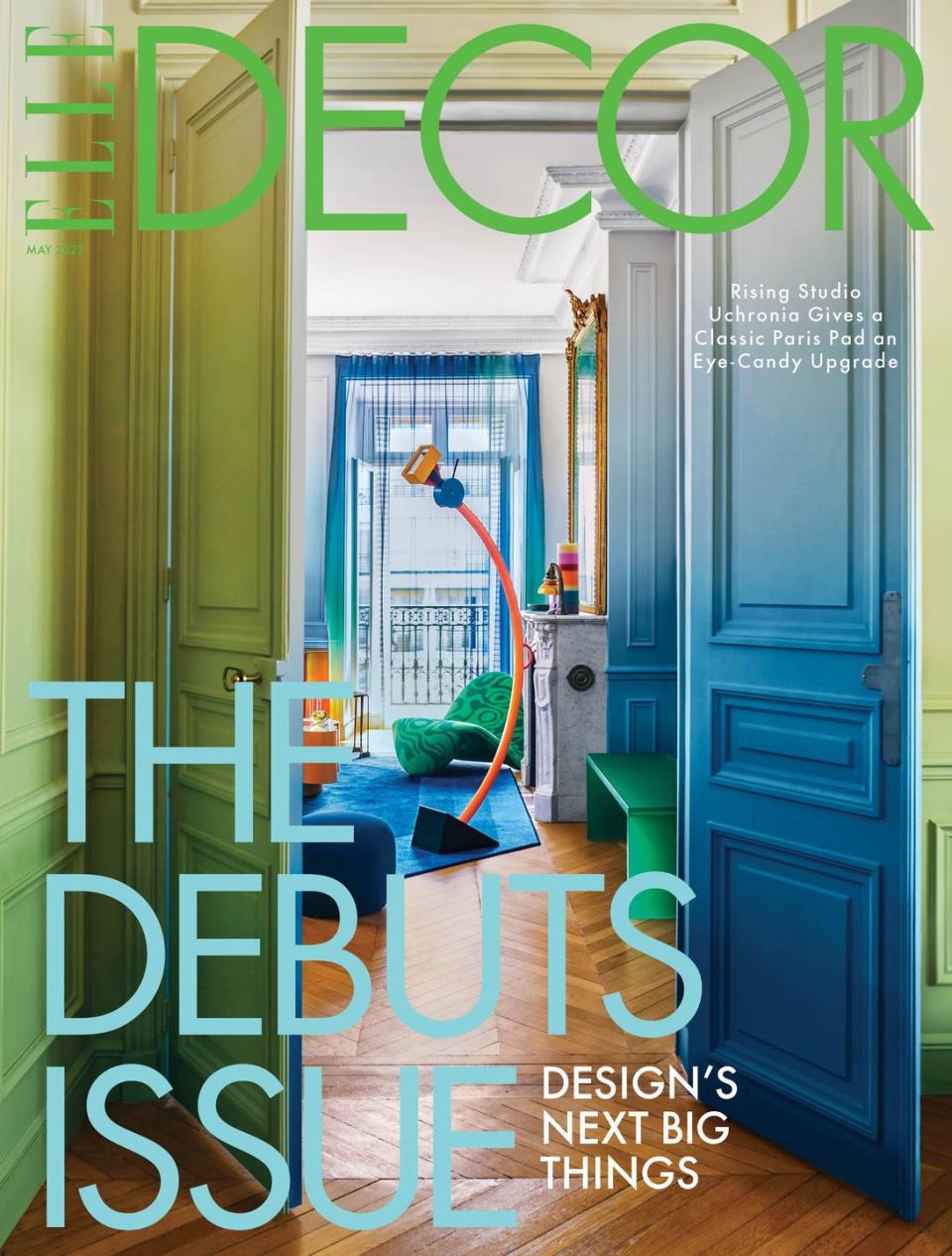After Years of Flea-Market Trips, a Writer Finds Joy in the Things She Decides to Keep

"Hearst Magazines and Yahoo may earn commission or revenue on some items through these links."
For many years, I set my alarm to ring at five on Sunday mornings. I’d slip out of bed, leave my young husband sleeping, and dress in the dark. My friend Anna waited outside in an SUV. We drove on the empty streets of our Southern California neighborhood to the coffee shop, which was supposed to open at six but rarely did. If luck was on our side, we carried out extra-large lattes for the drive and arrived at the flea markets just before seven—Pasadena City College on the first weekend of the month; Rose Bowl, the second; Long Beach, the third; and Santa Monica Airport, the fourth—just as the vendors, many of whom we knew by name, were setting up their stalls.
We strolled the aisles slowly. It was our time to talk. Our problems and our hopes were legion. Anna and I were just beginning our home lives. She had three boys; I had one. I’d begun my life as a swap-meet goer in college when I’d rented a cottage in Berkeley, California, that was surrounded by berry bushes. My preference was for waffles with more berries than batter, but the juice from them wrecked an electric waffle maker after only a few months. I found an old cast-iron over-the-burner contraption at the swap meet for a dollar.
What I Kept: Dining Room
Orchard Ware dinnerware with
dogwood blossom motif, service for 40;
four Audubon bird charts on wooden dowels; china in white with gold edging; cowbells
Anna and I thought about our kids’ rooms especially. I found two French faux-bamboo twin beds, a freestanding blackboard, some thick homespun calico for duvet covers. Anna zeroed in on old toy trucks: She planned to devote the whole backyard of the rental house to a sandbox. We bought for bargain prices and for beauty. We had no heirlooms yet. We wanted our homes, even rented, to be beautiful and to feel settled. Sometimes we didn’t find anything to buy, but I can’t remember ever returning home without new resolves.
On those flea-market Sundays, time seemed to stretch. We had the hour there and the hour back in the car for conversations, which seemed to wind and climb. We talked while we shopped too, with interruptions for bargaining. Our husbands were often the subject. They didn’t do enough, we thought. Both brilliant men, ambitious in their work; less ambitious, we felt, in the energies devoted to communal family life. We thought seriously and philosophically: about marriage, about motherhood, about work. Time, as it turned out, was what we never had enough of.
What I Kept: Kitchen
Japanese tea set;
seasoned cast-iron pans;
glass refrigerator containers;
glass pedestal cake plates;
primary-colored Pyrex nesting bowls
We also bought gifts. Being previously owned seemed to make an object more unique. Though these presents weren’t exchangeable, they were one of a kind and not directly traceable to a price. We loved Miriam Haskell’s jewelry, vintage necklaces, and earrings from the 1930s and ’40s. They were just expensive enough to be special but still affordable in the way “real” jewelry would not have been then. Vintage Christmas tree ornaments were favorite gifts. As were old dowels, which could be grouped together to make stunning menorahs. I found a vintage printed felt skirt for the tree.
Sometimes we returned to houses where everyone was still sleeping. So as not to wake up slumbering families, we’d meet later to carry the larger items in. It felt like magic to slip back into bed—after having had an adventure, figuring out a possible solution to this week’s urgent problem, and buying a set of Swedish crystal wineglasses—and to have missed nothing at all.
Then the time came for us to move into permanent homes. Little by little, we furnished them. Not all at once, our Sunday runs to the flea markets became less regular. The kids began to have practices and tournaments and dance competitions on weekends, which required early wake-ups for other kinds of drives. Besides, our houses had become settled.
Eventually, Anna and I became obsessed—along with everyone else with older children who’d grown up in one house—with decluttering. We wanted less: We donated; we organized; we purged.
What I Kept: Bedroom
Small oil painting of an orange and
an orange blossom; Japanese landscape painting of Mount Fuji, on a metal surface;
artist’s wooden model of a torso with
very long legs; African stool
Now our children live in their own apartments, and Anna and I see them for dinner, the way we see our friends. But we haven’t returned to the flea markets. Sunday mornings, now, we each make coffee and sit at our desks, reading scenes we’ve written for books, looking for patterns. Novels and memoirs, like homes, are made of many scraps from different places and times and are also dependent on the art of arrangement.
But we still live among things found during those dawn runs out of our houses, when our families slept. A disproportionate number of things from the flea market survived our many purges. Anna now lives in a high-rise in Brooklyn; it pleases me to recognize her Gustavian corner cupboard and four small Craftsman-framed photographs and to remember the stalls they came from. When I walked through my own house to remember what had come from the markets, I found treasures in every room.
Mona Simpson is a best-selling novelist whose new book, Commitment (Knopf), was recently released.

This story originally appeared in the May 2023 issue of ELLE DECOR. SUBSCRIBE
You Might Also Like

